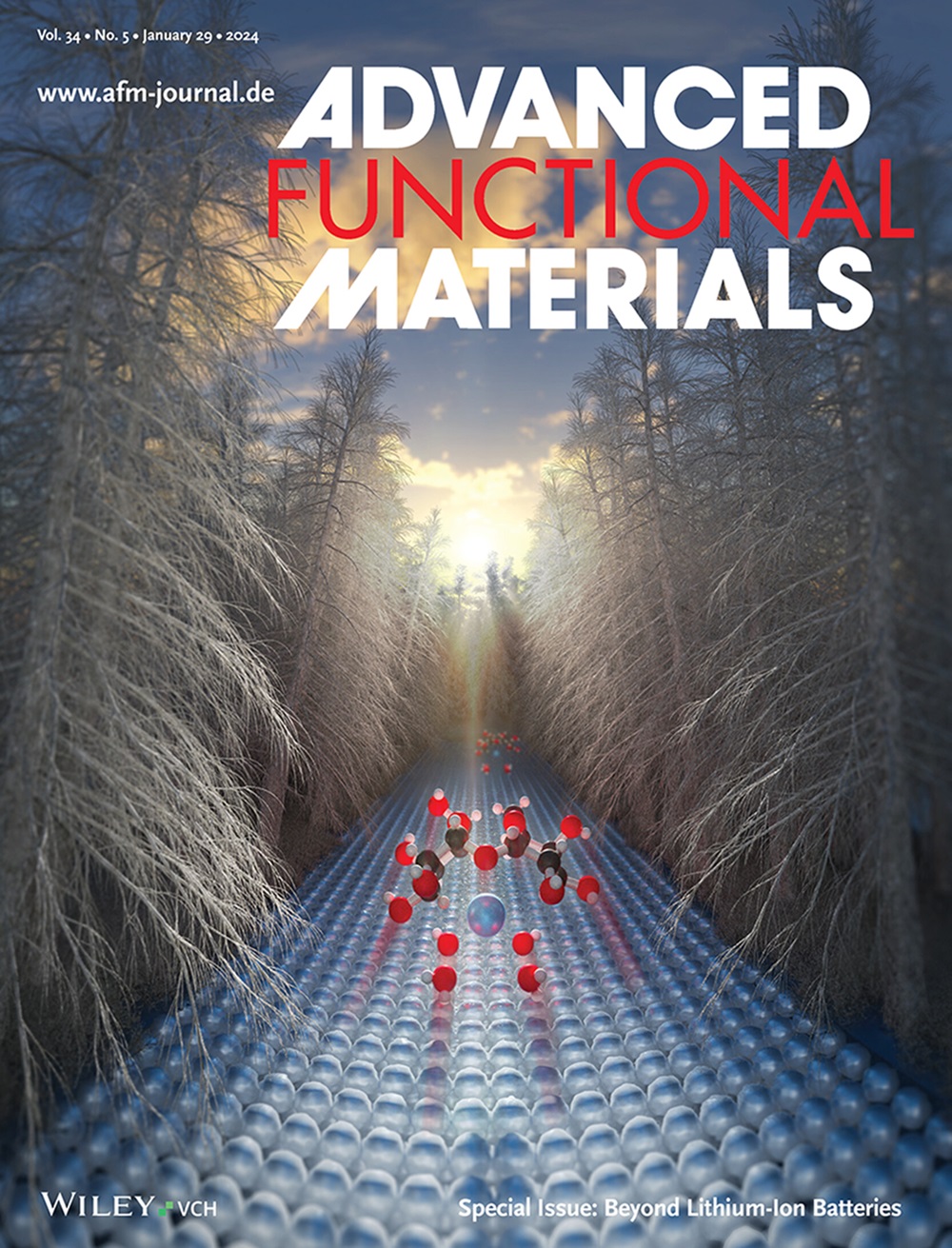Maximizing Functional Diversity of Electrolyte Additives through Modular Molecular Engineering to Stabilize Zinc Metal Anodes
IF 18.5
1区 材料科学
Q1 CHEMISTRY, MULTIDISCIPLINARY
引用次数: 0
Abstract
Molecule design is significant for achieving the functional diversity of electrolyte additives in aqueous zinc-ion batteries, yet the strategy is underutilized. Here modular molecular engineering is proposed to segregate and recombine hydrophilic (hydrophobic) and zincophobic (zincophilic) modules within electrolyte additives to maximize the efficacy of electrolytes in promoting Zn stability and reversibility. By using an electrolyte with a polyoxometalate (POM) additive, (NH4)3[PMo12O40], which contains the zincophilic-hydrophobic polyoxoanion [PMo12O40]3− and the zincophobic-hydrophilic cation NH4+, a promising electrolyte system is developed. Experimental and theoretical analyses unravel that [PMo12O40]3−, consisting of a weak hydrophilic [Mo12O36] shell encapsulating a zincophilic intensifier PO43− core, can alter the Zn2+-solvation sheath and Zn-electrolyte interface. Meanwhile, NH4+ disrupts hydrogen bond networks of water, synergistically realizing high electrochemical stability of the electrolyte and Zn anode at both room and low temperatures. As a result, Zn//NaV3O8∙1.5H2O batteries with (NH4)3[PMo12O40] additive exhibit outstanding cycling stability, achieving over 10 000 cycles at 5 A g−1 at 25 °C and 800 cycles at 0.2 A g−1 at −30 °C. This work highlights the significance and promising of molecule design for electrolyte additives and expands the research scope of POM chemistry.

求助全文
约1分钟内获得全文
求助全文
来源期刊

Advanced Functional Materials
工程技术-材料科学:综合
CiteScore
29.50
自引率
4.20%
发文量
2086
审稿时长
2.1 months
期刊介绍:
Firmly established as a top-tier materials science journal, Advanced Functional Materials reports breakthrough research in all aspects of materials science, including nanotechnology, chemistry, physics, and biology every week.
Advanced Functional Materials is known for its rapid and fair peer review, quality content, and high impact, making it the first choice of the international materials science community.
 求助内容:
求助内容: 应助结果提醒方式:
应助结果提醒方式:


